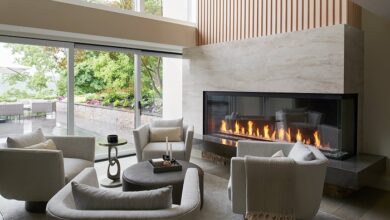Tips for safe and convenient electrical wiring in the kitchen
Only one or two decades have passed since the time when the schemes and methods for laying electrical networks were the same for any apartment. Special requirements for the installation of sockets and lighting applied only to the bathroom: according to safety regulations, the points of electricity output must be reliably protected from moisture.
Modern apartments are filled with various household appliances. Statistics show that more than half of electrical appliances are designed for use in the kitchen. The power of devices and their number is constantly increasing, which means that the load on the wiring is also increasing. If, at the same time, some electrical splitters (extension cords with multiple sockets, adapters) are additionally used to connect powerful household appliances, the load on the network may increase to a critical state and a short circuit will occur. In the best case, the room will simply remain without electricity or household appliances will burn out. Much more dangerous is the likelihood of a fire due to a short circuit.
Thus, the safety of life depends on the correctly selected wiring diagram. Therefore, at present, when designing an electrical network in a room, it is necessary to take into account the ever-increasing power of household appliances and an increase in its range. It is also necessary to decide which type of network to use: single-phase or three-phase. Three-phase network has a large power reserve.
You also need to keep in mind that kitchen appliances are operated in an environment of high humidity and temperature. This imposes more stringent conditions on the technical characteristics of the wires and their wiring diagrams. For reliable operation, these circuits must have a branched structure for individual functional connections (points).
Functionally, it is desirable to combine the lines by electric power. For example, one line should be used for lighting residential premises, the second – for sockets in rooms, a corridor and a bathroom, a third – for kitchen sockets, to which low-power food processors (vegetable cutters, blenders, etc.) will be connected.P.). And for household appliances of high power, such as, for example, a washing machine, refrigerator, electric oven, provide for its own separate branch.
It is recommended to place its own socket under each kitchen appliances. Mounting the wires in the electrical box in the kitchen is undesirable, as this does not protect them from moisture. They should be laid only inside the wall, where they will be protected not only from moisture, but also from temperature changes. Wire connections must be well insulated.
As a way to protect the power supply of the entire apartment from possible overloads in the network when using powerful kitchen appliances, you should install a separate electrical panel for the kitchen and use protective current shutdown devices in case of a short circuit or network overload. You can buy them in stores of electrical goods and electrical equipment. There you can also buy LED strip, the use of which will make the interior of your apartment unusual.
Having your own electrical panel will allow you to turn off the power supply of a particular room and at the request of the user, for example, during repairs.
This method of electrical wiring and the use of automatic protection devices will avoid interruptions in the power supply of the apartment, thereby improving the quality and safety of life.



